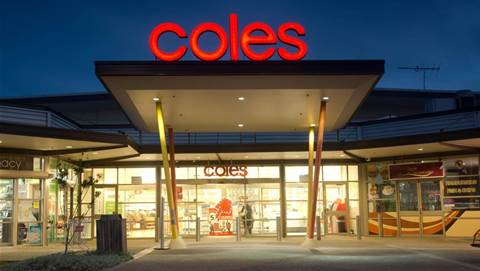When Covid-19 sent the world into lockdown, e-commerce sales skyrocketed and leaders began predicting that this could be the beginning of the end for brick-and-mortar retailers.

However, that is not the case at all, in fact, Covid-19 has revolutionised in-store retail creating a better experience for customers.
Sandy Shen, senior director and analyst in the digital commerce research team at Gartner said Covid has been a wakeup call to many organisations that didn’t have digital channels to engage customers.
She explained to Digital Nation Australia, “They rushed to deploy those platforms or use third-party digital platforms such as online marketplaces and social media to engage and sell to customers. The pandemic is a catalyst to the growth in online transactions and investment in commerce technologies.
“Certain segments have grown faster than the overall market, primarily B2B commerce and enterprise marketplaces where companies launch their own marketplaces that allow third party sellers to sell.”
Recent data from the US Department of Commerce shows that e-commerce spending – regardless of Covid – would’ve hit the same spot in 2022.
Sean Lee, co-founder and president at Cincy Brands said, “Much like the pop we saw in "work from home" stocks like Zoom, Netflix, and Restoration Hardware in 2020 and 2021, e-commerce revenue saw a five plus point bump in the percentage of sales of addressable U.S. retail (according to the US Census Data).”
Lee said people were “short-sighted” to think things had changed forever.
“But when vaccines came out, mask orders went away, and in-person events started again, we saw a natural shift back to in-person shopping, work, and entertainment. That has shown up with the work from home stocks correcting back to normal valuations and e-commerce as a percentage of US addressable retail reverting back to its natural growth line.”
Even e-commerce vendors are feeling the pinch with Shopify laying off 10 percent of its staff globally which Tobias Lütke, CEO at Shopify said was purely based on the prediction that e-commerce would expand exponentially.
In a blog post he said, “We placed another bet: We bet that the channel mix – the share of dollars that travel through e-commerce rather than physical retail – would permanently leap ahead by 5 or even 10 years.”
He said it’s now clear that bet didn’t pay off, “What we see now is the mix reverting to roughly where pre-Covid data would have suggested it should be at this point. Still growing steadily, but it wasn’t a meaningful 5-year leap ahead.”
Shen at Gartner said the growth has come down, but the contribution to total sales has not, which is likely to continue to grow for both B2C and B2B organisations.
She said, “A key reason is that many people have got into the habit of online shopping. Even when people are ready to go back to the store, many will retain the new behaviour they acquired during the pandemic.”
Jo Gaines, area VP for retail consumer goods at Salesforce said there is an emotion from retail that you cannot replicate online and vice versa.
“That's the same thing when it comes to in store experience, if you're getting that [experience] it's very hard to replace that online,” she said.
But she said in-store and online are not mutually exclusive either.
“If you’re looking at them in isolation, then it's going to be very hard to figure out your ROI. effectively. But if you look at it in totality and one thing that Brian [Solis, global innovation, Salesforce] and I have been talking about a lot in the last few days is that pre-purchase, pre discovery that I'm not searching for an eye pencil I'm searching for a smoky eye solution,” Gaines said.
Gaines said customers are asking for an experience or look rather than a specific product. One of the ways they are doing that is through Instagram.
“Using that for discovery and then whatever brands are recommended to you or products are recommended to you through that discovery, then you go off and purchase those online. It's a very different way of online shopping. Brands can't see it as linear or they can't just expect the people to go and search their product or their brands,” she explained.
Brick-and-mortar locations help online sales according to Richard Facioni, executive chairman at Alquemie Group.
He said, “If you open a physical store in a location, your online sales will typically go up in that in that location. The stores act as much as a marketing beacon. Your storefront is your permanent billboard. And so it feeds your online and vice versa.
“We've got 61 General Pants stores, we're going to do another twenty and then we'll probably do another 20. Online is roughly 30 percent of our sales and continues to grow and we know if we open these stores, we'll get more online sales in those markets as well; the two go hand in hand,” he said.
In fact, Facioni said purely e-commerce stores like SurfStitch, which the Alquemie Group owns, is harder to market.
“[This is] because you're constantly throwing money at digital marketing and performance marketing. You have to and the return on ad spend keeps falling and cost keeps going up,” he said.
“To have bricks and mortar stores as well as online, to me that is the model going forward. To the mix of stores to online that's going to vary brand by brand. Some brands probably went too hard with the stores and are pulling back.”



.png&h=140&w=231&c=1&s=0)
_(22).jpg&h=140&w=231&c=1&s=0)
_(20).jpg&h=140&w=231&c=1&s=0)





 iTnews Executive Retreat - Security Leaders Edition
iTnews Executive Retreat - Security Leaders Edition












_(1).jpg&h=140&w=231&c=1&s=0)



